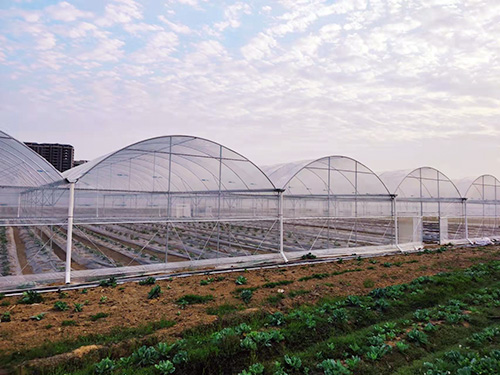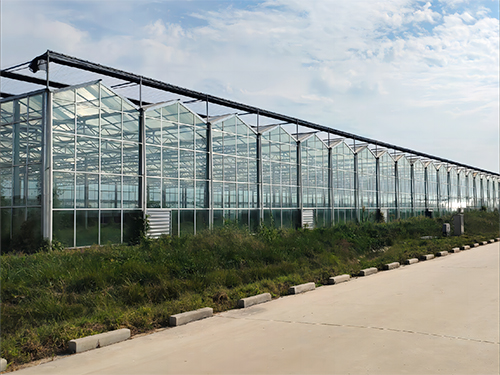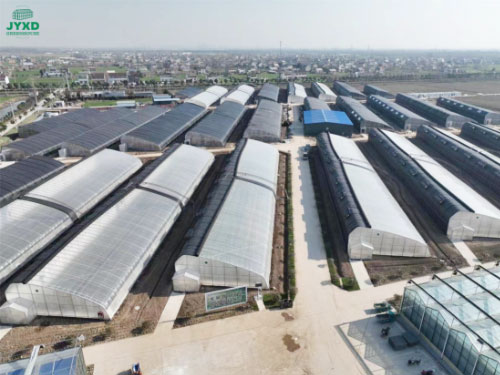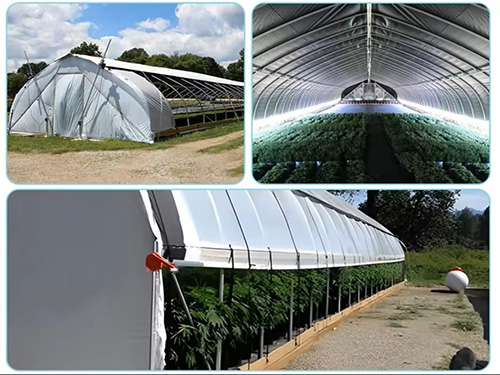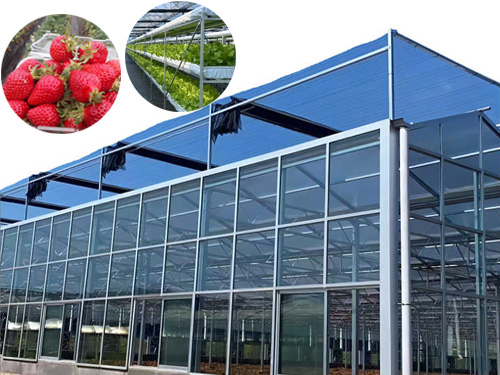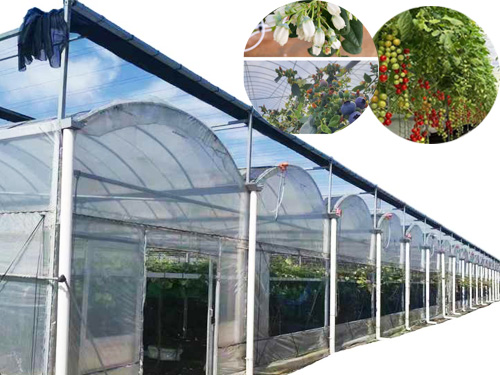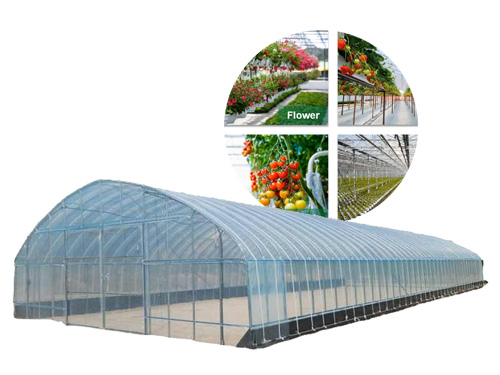NEWS DETAILS
NEWS INFORMATION
Tropical Greenhouses: How to Achieve Efficient Planting in High Temperature and Humidity Environments
AUTHOR:jyxd-greenhouse DATE:2024-10-27 20:28:55 HITS:58
In tropical regions, the high temperature and humidity climate pose challenges for agricultural production. Excessive rainfall, intense sunlight, and prolonged high temperatures can lead to increased crop diseases and unstable yields. Tropical greenhouses provide an effective solution by finely controlling the environment to improve crop quality and yield. This article will detail how to design and manage tropical greenhouses for efficient planting and explore future development trends, providing professional technical support for farmers and enterprises.
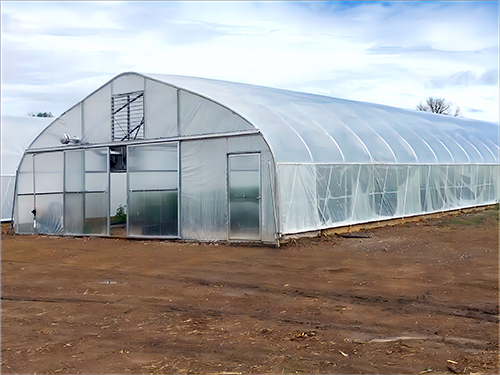
I. The Necessity and Challenges of Tropical Greenhouses
In tropical areas, open planting often faces the following problems:
Excessive Rainfall: Leading to soil waterlogging and root hypoxia.
High Temperature and Humidity: Increasing the risk of fungal diseases.
Strong Ultraviolet Light: Burning crop leaves and reducing yields.
Through a greenhouse system, farmers can better control environmental parameters such as temperature, humidity, and light, reducing diseases and improving crop growth efficiency. However, tropical greenhouses also face challenges in energy management and ventilation optimization, requiring innovative technologies to address these issues.
II. Key Design Points for Tropical Greenhouses
1. Efficient Ventilation System
Ventilation is crucial in tropical greenhouses. Here are common ventilation design solutions:
Natural Ventilation: Achieved by setting up double-opening windows or side louvered windows to facilitate air convection.
Fan + Wet Curtain System: Fans draw in outside air, which is cooled through wet curtains, providing fresh air to the greenhouse.
Rooftop Windows: Reducing internal heat buildup to avoid high temperatures that can damage crops.
2. Shading and UV Control
The intense sunlight in tropical regions can burn crops; therefore, effective shading and light control systems are needed.
Movable Shading Nets: Flexibly adjusted according to weather conditions to prevent excessive sunlight.
UV Filtering Film: Using films that filter ultraviolet light on the greenhouse roof reduces light damage and protects crop leaves.
3. Drainage and Foundation Design
Frequent rainfall during the rainy season can lead to water accumulation inside the greenhouse; thus, a comprehensive drainage system is essential:
Sloped Foundation Design: Facilitating quick drainage of rainwater to avoid pooling.
Waterproof Membrane and Drainage Ditches: Preventing rainwater from seeping into the root zone, ensuring soil aeration.
III. How to Achieve Efficient Planting in High Temperature and Humidity Environments
1. Precision Irrigation System
Traditional irrigation can lead to excessive water accumulation, worsening diseases. In tropical greenhouses, precision irrigation systems are more suitable:
Drip Irrigation System: Delivering water directly to the roots, avoiding leaf wetness.
Humidity Sensors: Monitoring soil moisture in real-time to optimize irrigation frequency.
2. Smart Temperature Control System
Using IoT technology and automated control systems to achieve intelligent management of the greenhouse:
Temperature and Humidity Sensors: Monitoring temperature and humidity data inside and outside the greenhouse to automatically adjust fans, wet curtains, and other equipment.
Weather Data Integration: Adjusting greenhouse parameters based on weather changes, such as increasing shading or reducing irrigation.
3. Pest and Disease Control Technologies
Tropical greenhouses are susceptible to pest and disease invasions, necessitating multiple control measures:
Biological Control: Introducing natural predators to control pests and reduce pesticide use.
Insect Nets and Enclosed Systems: Installing insect nets around the greenhouse to block external pests.
Environmental Disinfection: Regularly sterilizing the greenhouse with UV lamps or steam disinfection to reduce pathogen proliferation.
IV. Typical Crops and Planting Solutions in Tropical Greenhouses
1. Fruits: Tropical greenhouses are suitable for planting guavas, mangoes, and bananas, using temperature and humidity control to improve fruit quality.
2. Vegetables: Crops such as tomatoes, cucumbers, and peppers can be planted in greenhouses to reduce diseases and increase yields.
3. Flowers and Medicinal Plants: High-value plants like orchids and herbs require constant temperature and humidity for growth, making greenhouse cultivation particularly suitable.
V. How to Reduce Operational Costs of Tropical Greenhouses
1. Using Renewable Energy
In sunny tropical regions, renewable energy is an ideal choice for reducing costs:
Solar Panels for Power Supply: Providing energy for fans, lighting, and irrigation systems.
Rainwater Harvesting Systems: Collecting rainwater for irrigation to reduce reliance on tap water.
2. Government Subsidies and Financing Support
Many countries offer subsidies and low-interest loans for greenhouse agriculture, helping farmers build efficient greenhouses.
3. Data-Driven Management
By monitoring greenhouse operational data through IoT, farmers can precisely control the greenhouse environment, reducing energy waste and labor costs.
VI. Case Studies: Successful Practices in Tropical Greenhouses
Southeast Asia Smart Greenhouse
A farm in Malaysia achieved efficient chili cultivation through a fan + wet curtain system and smart temperature control equipment. Under high-temperature and high-humidity conditions, this greenhouse doubled its yield and successfully reduced pest and disease occurrences.
Brazilian Solar Greenhouse
A greenhouse in Brazil utilized solar panels to power its systems and employed a drip irrigation system to grow tomatoes, significantly increasing profits while reducing water waste.
African Vertical Agriculture Greenhouse
In a Kenyan urban greenhouse project, vertical planting racks and LED supplemental lighting were used to grow green vegetables, providing a stable food supply for urban residents.
VII. Future Development Trends
1. Ecological Greenhouses Combined with Organic Farming
Future tropical greenhouses will increasingly use organic fertilizers and biological control measures, promoting ecological agricultural development.
2. Smart Agriculture and AI Applications
Using artificial intelligence and big data technology to predict crop growth cycles and monitor disease risks, enabling more efficient management.
3. Modular Greenhouse Systems
Modular greenhouses can be quickly deployed according to needs and flexibly adjusted under different climatic conditions.
VIII. Conclusion
In the high-temperature and high-humidity tropical regions, greenhouse agriculture provides an ideal solution for improving crop yields and quality. By optimizing ventilation systems, precision irrigation, intelligent temperature control, and pest and disease control technologies, farmers and enterprises can overcome climatic challenges and achieve efficient planting. In the future, with the integration of renewable energy and smart technologies, tropical greenhouses are expected to become an important pillar of agricultural development.
If you are planning to build a greenhouse in a tropical region or wish to learn more about planting solutions, feel free to contact our professional team for tailored greenhouse design and management solutions!
Frequently Asked Questions (FAQ)
1. What is the construction cost of a tropical greenhouse?
The cost depends on the size of the greenhouse, materials, and equipment, typically ranging from $300 to $600 per square meter.
2. How can I prevent pests and diseases in tropical greenhouses?
Utilizing biological control, enclosed systems, and regular disinfection can effectively manage pests and diseases.
3. Are tropical greenhouses suitable for small-scale farmers?
Yes, with modular design and smart technologies, small-scale farmers can also benefit from efficient management and high yields.
Let your tropical greenhouse thrive! Contact us now to explore more planting possibilities and achieve sustainable agricultural development.
Hebei Juyou Xinda Greenhouse Facilities Co.,Ltd.
Copyright © 2024-2025 https://www.jyxd-greenhouse.com. All Rights Reserved Hebei Juyou Xinda Greenhouse Facilities Co.,Ltd.Copyright





 Current Location:
Current Location: